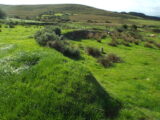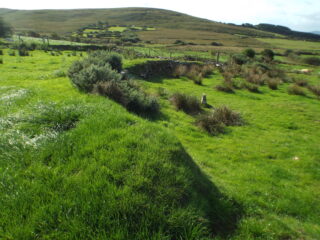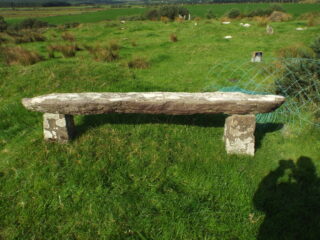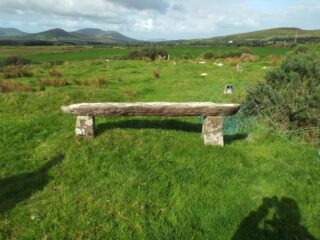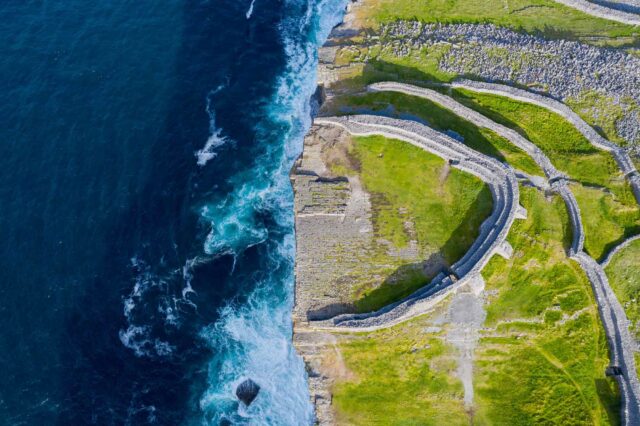Fógra
WARNING: It should be noted that these sites are unguided and a level of care and caution should be maintained during all stages of your visit. The Office Of Public Works (OPW) will not be held responsible for any damages, injuries, or losses that occur
Cloghanecarhan Ringfort and Ogham Stone
Located just 7km south-east of Cahersiveen the medieval enclosure at Cloghanecarhan has been described as a ringfort or ‘cashel’, but was more likely an early monastic site than a medieval farmstead or a fortification. The site is known locally as Keeldarragh which probably comes from the Irish “Cill Darra” meaning the ‘Church of Dara’ or ‘The Church of the Oak’. The site includes an early medieval cross slab, three ‘leachta’ (rectangular dry stone altars used for ritual purposes), and the foundations of a circular hut. Immediately outside the enclosure there is also a souterrain, a concealed underground passage which would have been used as a cellar or fridge for food storage but which could also double as a hiding spot or place of refuge in the event of an attack. An ogham stone originally stood at the entrance to the ringfort but has been relocated in recent years to the northern side of the site where it lies horizontally on two supports.
Ogham is an ancient Irish alphabet and our earliest written source for the Irish language. The ogham alphabet uses a script made of lines cut on, across, or either side of a central 'stem' line. Ogham inscriptions were usually written vertically and are read from bottom to top. Ogham stones appear to have been erected either as memorials or territorial markers and usually record the name of a person with a standard formula such as: “X son of Y, member of the tribe of Z”. Although the alphabet was designed for the Irish language, a few Latin inscriptions in ogham also survive in Ireland. There are about 400 surviving ogham inscriptions. Approximately 350 of these are in Ireland with the largest number of ogham stones located in counties Cork, Kerry, and Waterford. Around 50 ogham inscriptions have been discovered in Britain with ogham stones located in Wales, Scotland, The Isle of Mann, and in Cornwall and western England.
The Cloghanecarhan Ogham Stone is approximately 2m long and is made of slate. Its inscription reads: EQQẸGGNỊ [MA]Q̣[I] ṂẠQI-CAṚATTỊNN ("'of Ec...án? son of Mac-Cáirthinn"). The modern day Irish language name for the district is Clóghán Cárthainn meaning “The stone structure of Cárthan”. The place name may refer to the same individual referred to on the ogham stone. The grammatical style of this inscription suggests it was carved approximately 600AD.
Visit Historic Environment Viewer for more information on Cloghanecarhan Ringfort & Ogham Stone
Protect our Past - Click here to read about the importance of protecting our country’s unique heritage sites
This national monument is protected in accordance with the National Monuments Acts 1930 to 2014
Gailearaí
Suíomhanna cóngarach
Teach Dhónaill Uí Chonaill – Tigh Mór Dhoire Fhíonáin
Baile dúchais Dhónaill Uí Chonaill
Timpeall 15.0 km ón
Maoin Oidhreachta Domhanda EOECNA Sceilg Mhichíl
Mainistir Oileánda ina seasamh go hard os cionn na farraige
Timpeall 27.3 km ón
Ionad an Bhlascaoid
An scéal a bhaineann le pobal uathúil oileánda
Timpeall 32.9 km ón
